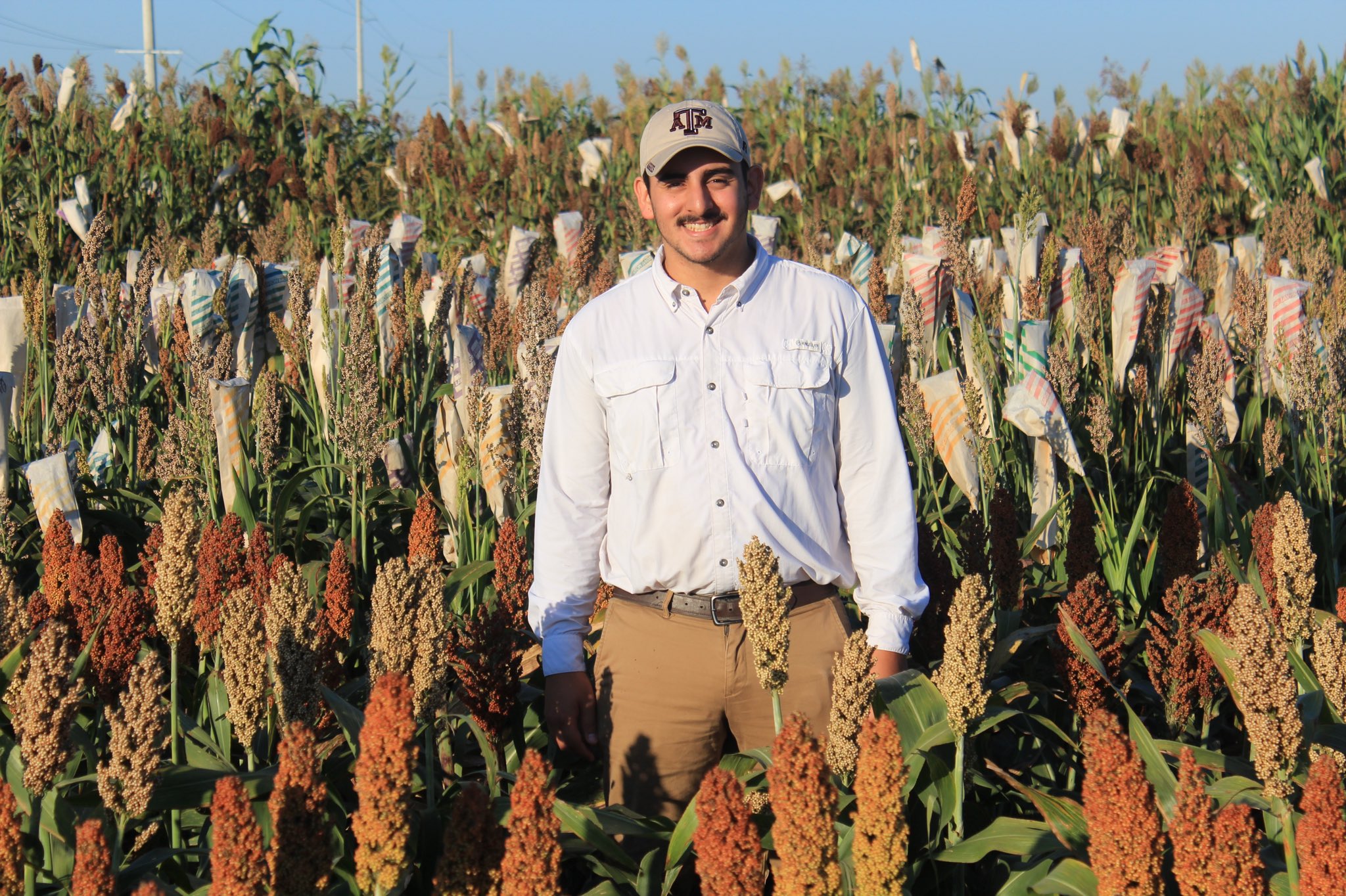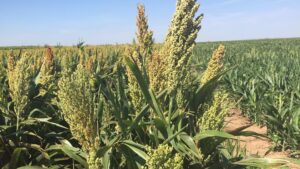Fabian Leon is pursuing a M.S. in Plant Breeding at Texas A&M University where he serves as a research assistant in the sorghum breeding program under Dr. William Rooney. His current projects involve evaluating grain sorghum hybrids and developing genomic prediction tools for the program. Fabian received his B.S. in Agricultural and Medical Biotechnology from the University of Kentucky. Currently, he is a member of NAPB, CSSA, Society for the Advancement of Chicanxs and Native Americans in Science (SACNAS), and Minorities in Agriculture, Natural Resources and Related Sciences (MANRRS).
Fabian sat down virtually with Seed World to tell us his story in his own words.
I was born in Bakersfield, California, where my parents were migrant farm workers at the time, and I grew up in Nicholasville, Kentucky. Stereotypically, my chance at an American education was supposed to be my ticket away from agriculture. However, I spent my childhood summers and winter vacations visiting our family and the farm in Guanajuato, Mexico, that my parents had to leave behind when they immigrated.
I would consider myself Chicano but not Native American. The Chicanx label arose through the ethnic pride of Mexican American youth in the 60s and 70s sort of as a way of unifying Mestizx identity. Mestizx means mixed race between Spanish and indigenous descent. The Chicanx movement took place in the Southwest U.S. and very much affected civil rights, education, and labor policies in the country — all with deep implications for agriculture. “Chicanx” has a whole history which I can’t fully cover here. In brief, Chicanx can mostly be used interchangeably with Mexican American for my case.
Growing up I could always tell my parents were knowledgeable and proud agriculturalists. I took up their pride and as early as middle school, I knew that I wanted to be involved in farming. I signed up for agriculture classes and started doing ag-related extracurriculars before my mom could convince me to be a doctor or a lawyer. There wasn’t a lot of positive representation for a young Mexican in central Kentucky agriculture, so I had to look globally pretty early on for role models. I found the legacies of Cesar Chavez and Norman Borlaug and I’ve been chasing those ever since.
As an undergraduate, I explored almost every aspect of crop science except plant breeding. I was primarily involved in plant pathology research, but I also worked in agronomy and entomology programs. I studied potato and sweet potato viruses, pythium root rot on tobacco, aphids, and remote sensing for crop management but I never actually joined a crop improvement program. I decided on plant breeding after I tried everything else out.
I work in the sorghum breeding program at Texas A&M University. Primarily, we develop inbred lines for the Texas grain hybrid sorghum industry, and we are always trying to cram as many potential inbreds through our development and testing pipeline to find the best performers for generating hybrids. My masters research attempts to lay the groundwork for incorporating genomic selection/prediction into our hybrid testing process for evaluating inbred lines. Developing genomic prediction models could speed up our process by forecasting which lines and combinations might work out better and thus save us a lot of time, money, and effort which will translate into sorghum producers receiving improved genetics more rapidly.
Sorghum is marvellous for many reasons and its success is a story of grit and diversity. It is one of the world’s most important cereal grains and a staple food crop for much of the world. It is resilient to drought and heat and will become increasingly relevant in arid and semi-arid regions of the world. Sorghum is an incredibly versatile crop with sorghum types being grown for food, forage, broom-making, sugar, syrup, windbreaks, cover cropping, livestock feed, alcohol, waxes, and many more end products.
It is a primarily self-pollinated crop with the potential for outcrossing, which gives a breeder options. It can serve subsistence farmers while also scaling up commercially with mechanization. More personally, sorghum is an important crop in the region of Mexico where my family is from, and we grow it on our family farm.
Growing sorghum is like finally getting to partake in what I was meant to do if my family could’ve stayed on the farm.
There do exist barriers to Chicanxs and Native Americans in my scientific discipline. There are obviously the issues of systemic racism, historic exclusion, forcible removal from land, and erasure of their agricultural practices. There are stereotypical notions that brown people are only on the bottom rungs of the agribusiness ladder. And current immigration and labor policies still exploit agricultural workers who are predominantly Latinx. All of this makes crop sciences and agricultural sciences a hard sell for young brown kids to buy into.
Nevertheless, Chicanx and Native American people have some of the proudest agricultural traditions and will undoubtedly persist in our sphere despite the off-putting practices and notions. Plant breeders have to be ready to welcome those backgrounds and adapt with them. In our discipline, we have to remember that we owe our major crops to indigenous people first, not modern breeding techniques. We stand on the shoulders and land (see landgrabu.org) of giants.
I have become involved with the Society for the Advancement of Chicanxs and Native Americans in Science (SACNAS) which is a professional society like NAPB. I haven’t participated in it much on the national level, but I have been involved with it here on my campus to a small degree. I’m more heavily involved in Minorities in Agriculture, Natural Resources and Related Sciences (MANRRS) and have even served as a national student officer for that organization which serves to empower minorities in agriculture, natural resources, and related sciences. SACNAS is the diversity in STEM organization while MANRRS is the diversity in agriculture organization. Both are very important to me for obvious reasons.













